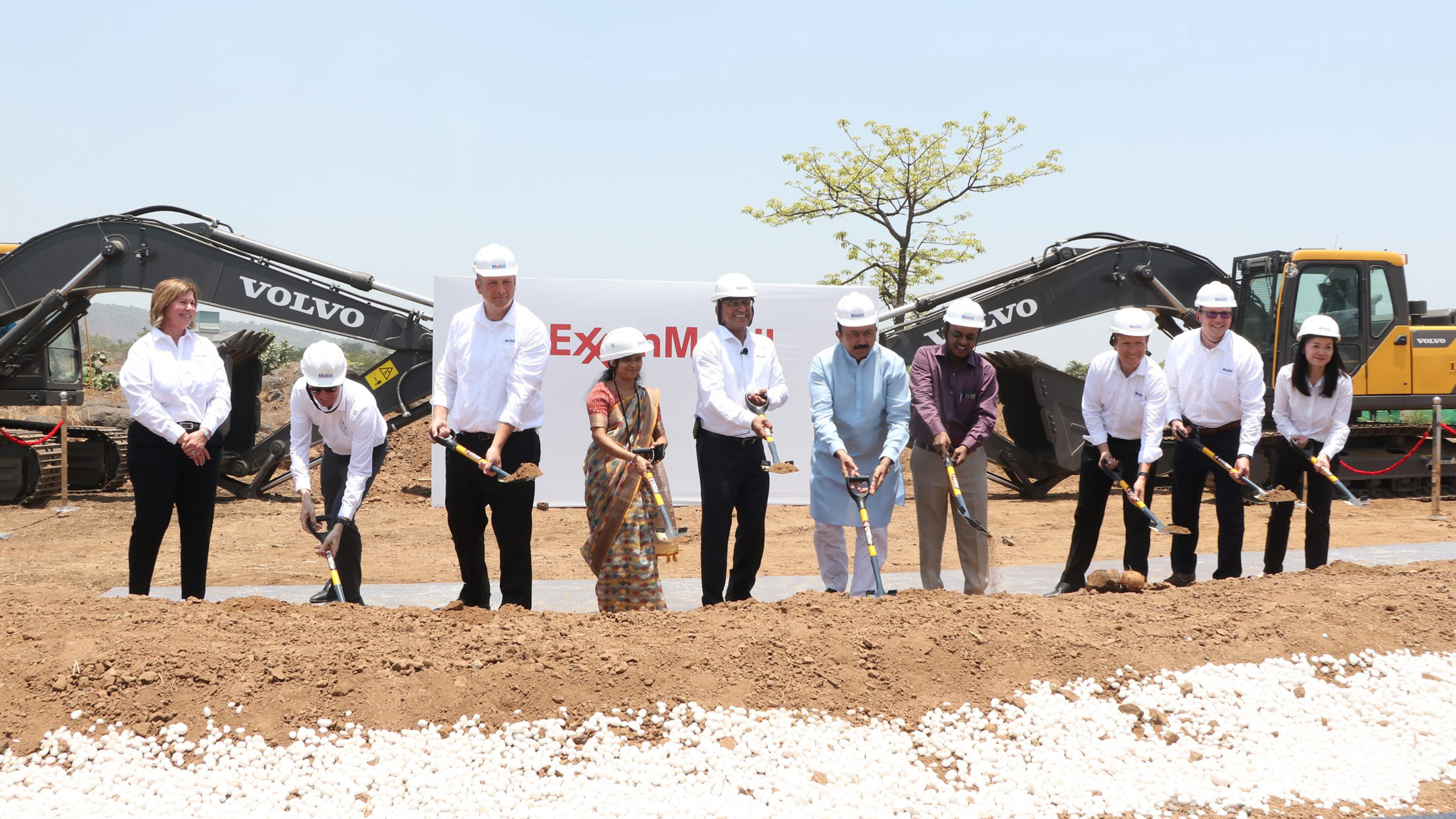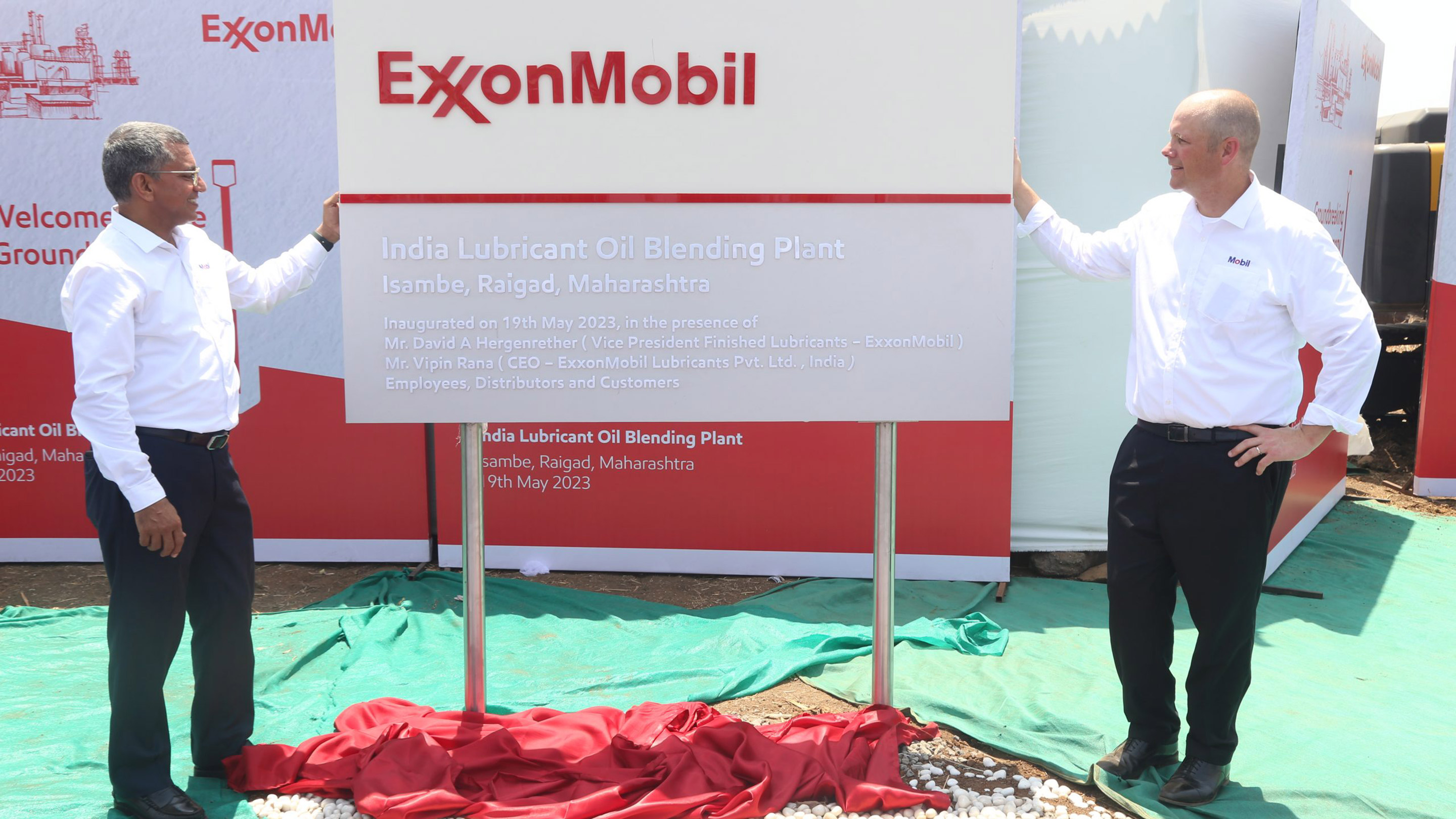ExxonMobil breaks ground on first greenfield investment in India
The foundation stone for the new ExxonMobil plant was laid on May 19th.
ExxonMobil had announced the final investment decision in the presence of Deputy Chief Minister Devendra Fadnavis, Industry Minister Uday Samant and senior officials from the state government.
The new, INR 900 crore (US$110 million) plant will have the capability to potentially manufacture 159,000 kiloliters of finished lubricants a year, and is expected to begin operations at the end of 2025.
The plant will be built in one of India’s leading manufacturing hubs, in the Maharashtra Industrial Development Corporation’s Isambe Industrial Area in Raigad, southeast of Mumbai, supporting almost 1,200 new jobs construction of the plant.
We are proud to deepen our longstanding commitment to India with our first greenfield investment.
The investment is a significant boost to Make in India, a government-led initiative encouraging global companies to manufacture in the country. The program also aims to foster innovation and enhance skills development in the country’s manufacturing sector.
Once operational, the plant will supply lubricants to meet growing demand from industrial sectors such as manufacturing, steel, power, mining and construction, as well as from passenger- and commercial-vehicle segments.
It will also support local industry, sourcing a larger part of the base stocks and additives as well as all packaging from Indian businesses.
The demand for lubricants is accelerating in India, which is the third largest lubricants market in the world, growing at a compound annual growth rate of 2% thanks to its expanding industrial demand and more vehicles hitting the road.
While the automotive industry continues to dominate India’s lubricant market, rapid industrialization is also driving increased lubricant demand from industries.
This indicates high growth potential in the country’s industrial lubricant market, which was worth around US$1.4 billion in 2020 and is forecast to reach U$1.8 billion by 2027.
Mobil lubricants are being used across India by major industrial companies like Tata Steel, JK Cement, Dalima Cement, Manjushree Technopack, and others to help reduce operational costs, improve productivity and energy efficiency.
ExxonMobil Lubricants Pvt. Ltd. CEO Vipin Rana says that this investment is part of the company’s growing role in advancing India’s growth.
“This is a step change towards bolstering our position as one of India’s leading providers of high-performance lubricants. Manufacturing locally will simplify our supply chain, enabling us to serve the needs of our Indian customers and consumers more readily,” Rana says.
Recently, as part of an initiative to incorporate recycled plastics in finished lubricants product packaging, the company also launched a plastic pail packaging with 50 percent post-consumer recycled plastic, an industry first in the packaging category.
“We understand the ever-changing needs of our customers, and our initiative to transition to 50% post-consumer recycled plastic pails is just one example of how we are advancing their sustainability aspirations,” Rana says.
Explore more

Taking Indian talent to the world stage
- Our Indian talent provides vital support to our global operations.
- In Bangalore, our diverse teams come together to help drive innovation for our businesses.
- We are growing our capabilities in India and creating world-class opportunities for local talent.
2 min read
• Dec. 8, 2025
Pragmatic and empowering: The force behind India’s energy story
- India’s energy demand is growing rapidly, as it drives towards its Viksit Bharat 2047 goals.
- We’re investing in India’s people, industry and energy to support the nation’s next wave of growth.
- We’re getting ready for India Energy Week 2026, where energy experts gather to share ideas about the country’s energy future.
2 min read
• Nov. 18, 2025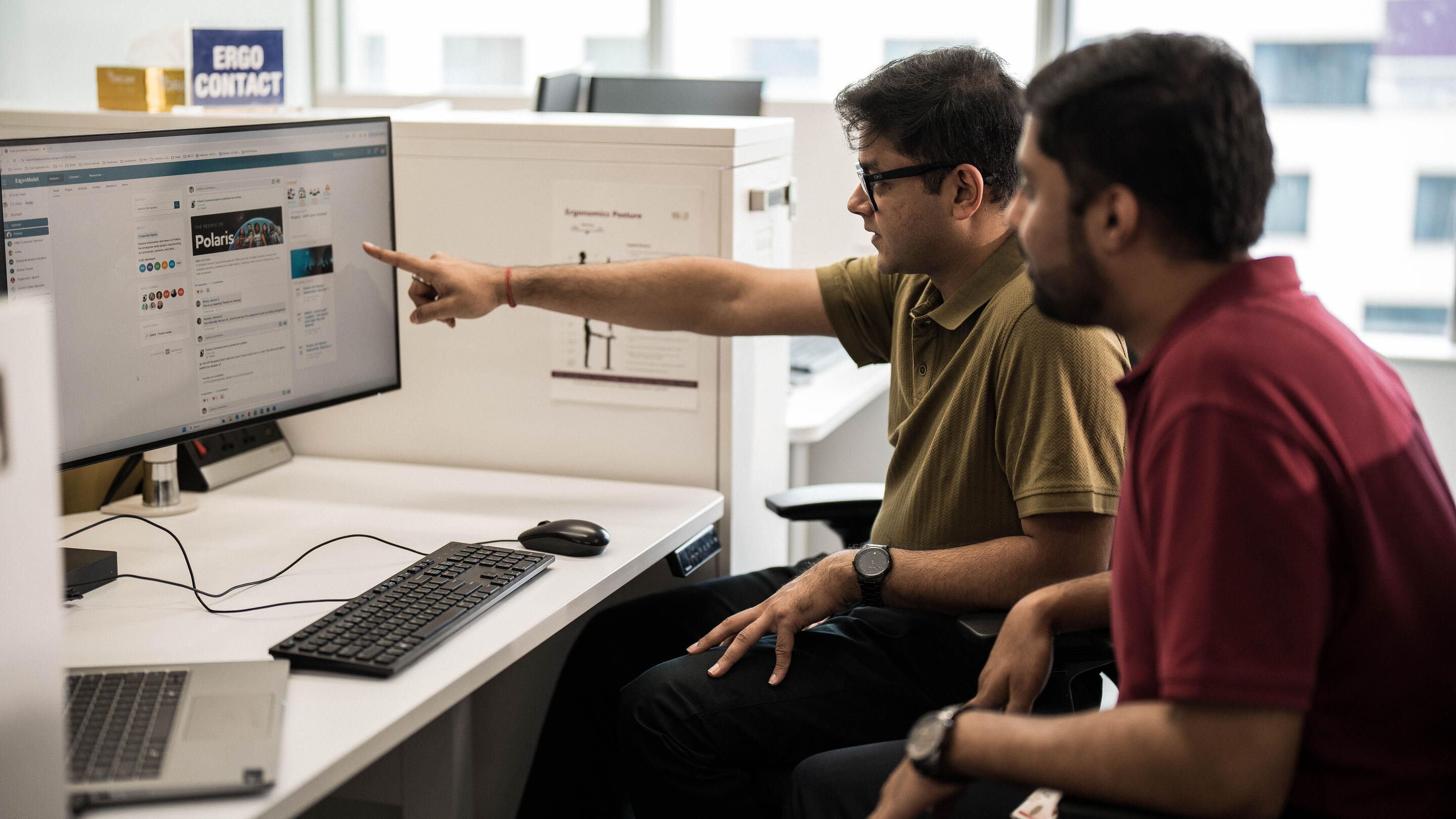
A to B: Turning Artificial Intelligence into Business Intelligence
- Our digitally savvy engineers are the secret to our AI edge.
- We’re using AI to create insights that help us work faster and collaborate at scale.
- We’re partnering with top Indian universities to accelerate AI training for our people.
3 min read
• Oct. 23, 2025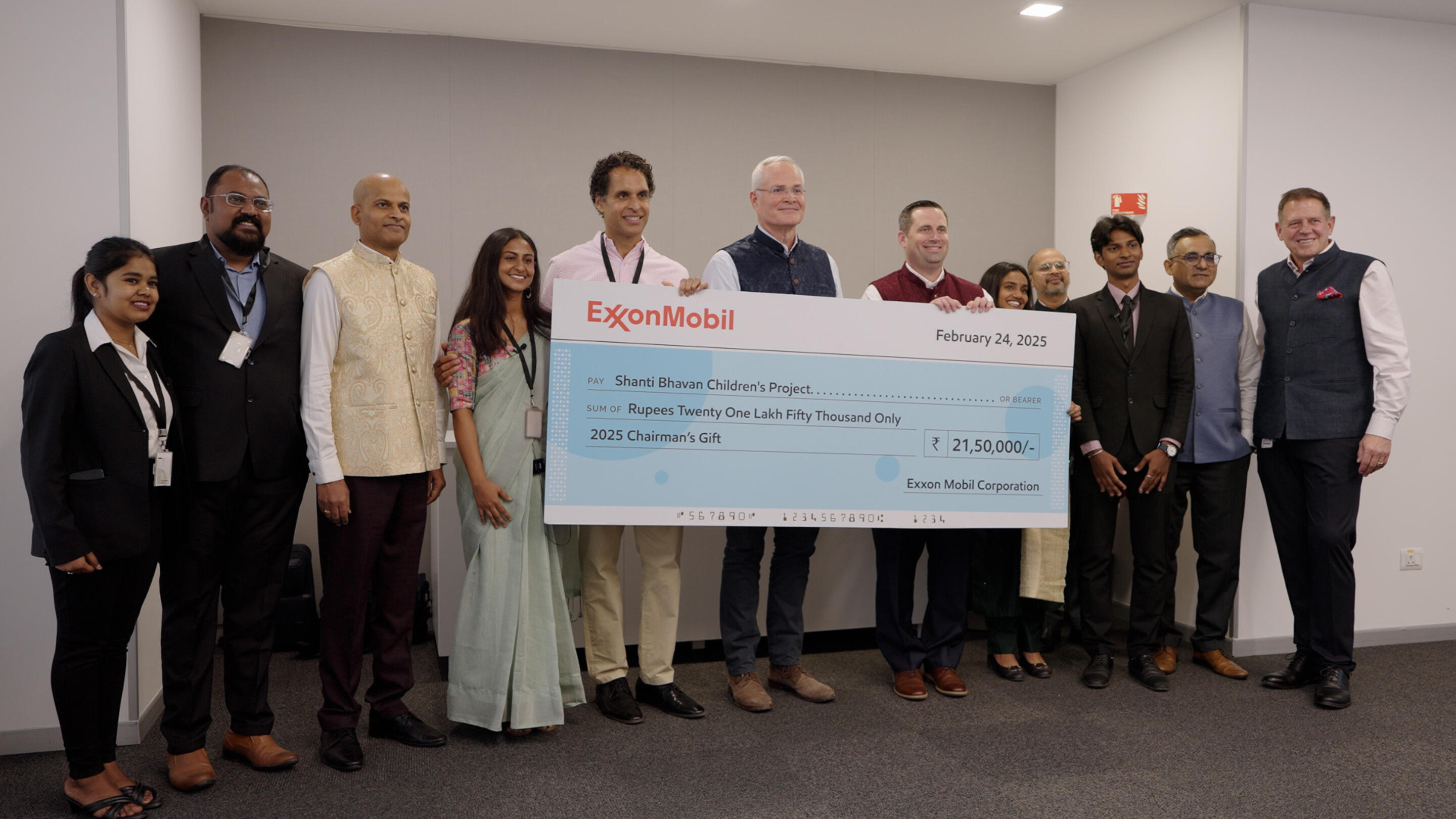
Changing lives with the power of education
- Everyone deserves the same opportunities to pursue education and improve their lives.
- We support Shanti Bhavan, a school helping Bangalore’s most underprivileged children.
- The school’s success stories include producing science, technology, engineering and mathematics (STEM) graduates who now work for ExxonMobil.
5 min read
• Sept. 12, 2025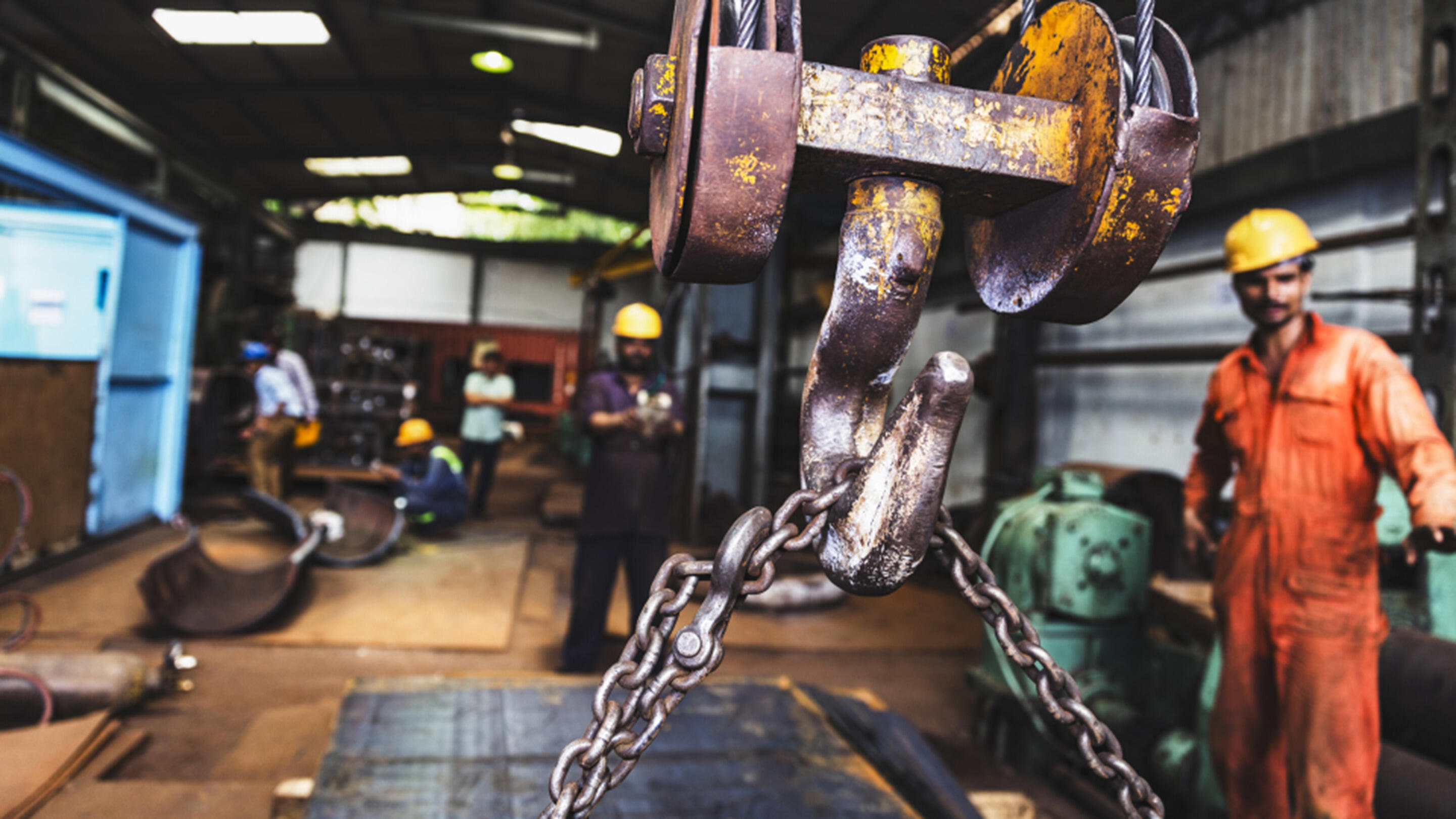
Viksit Bharat: LNG can be part of that
- Lower emissions and availability at scale make LNG a long-term fuel in India’s energy transition.
- Switching to LNG can help Indian industry reduce emissions while staying globally competitive.
- A third of India’s heavy-duty trucks are slated to convert to LNG in five to seven years.
3 min read
• Aug. 21, 2025
Rockhound to rockstar: Jen’s career across the globe
- Jen turned her love of rocks into a lifelong, globe-spanning career.
- She has led many geoscience teams at ExxonMobil and is now building capabilities at the company’s Bengaluru Campus.
- Jen encourages young people who want to see the world to pursue a career in energy.
3 min read
• June 17, 2025
